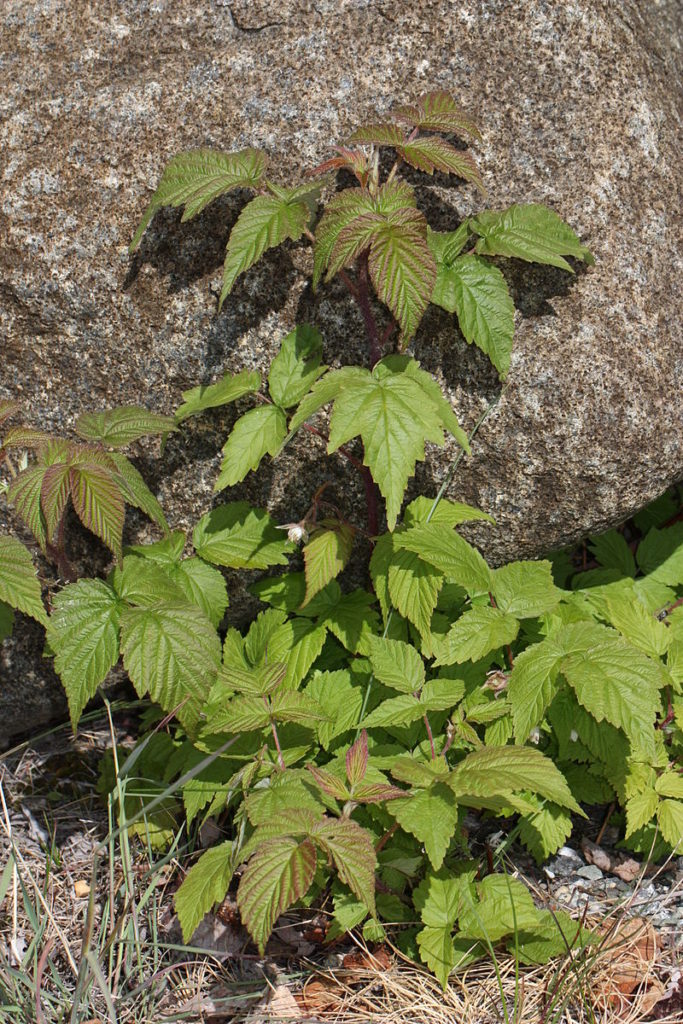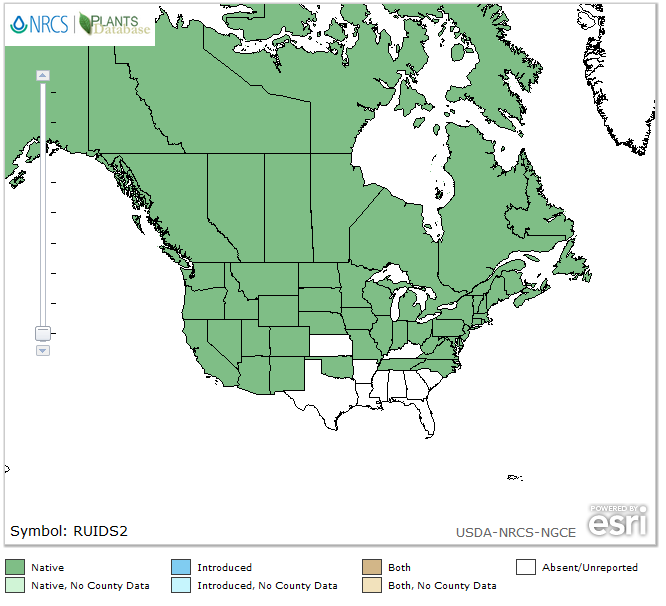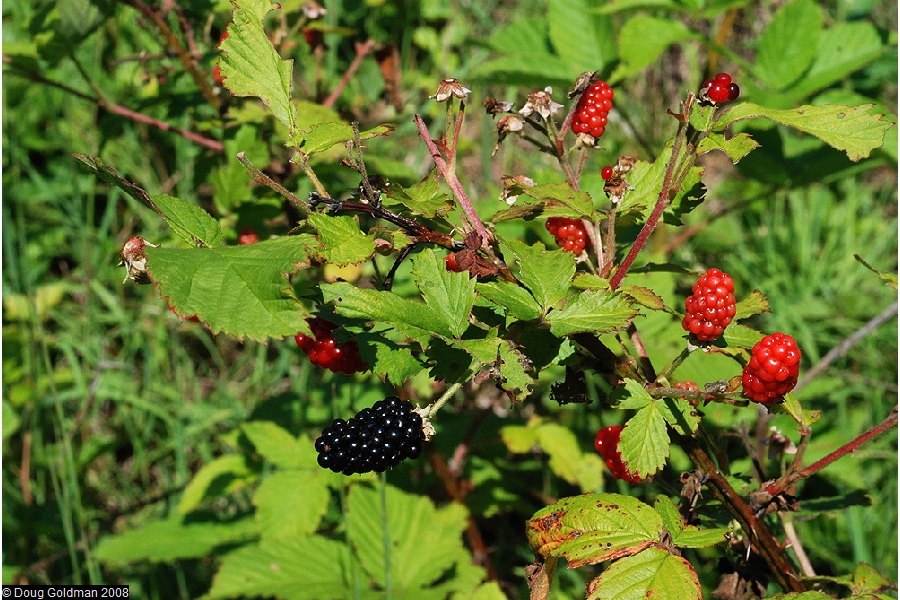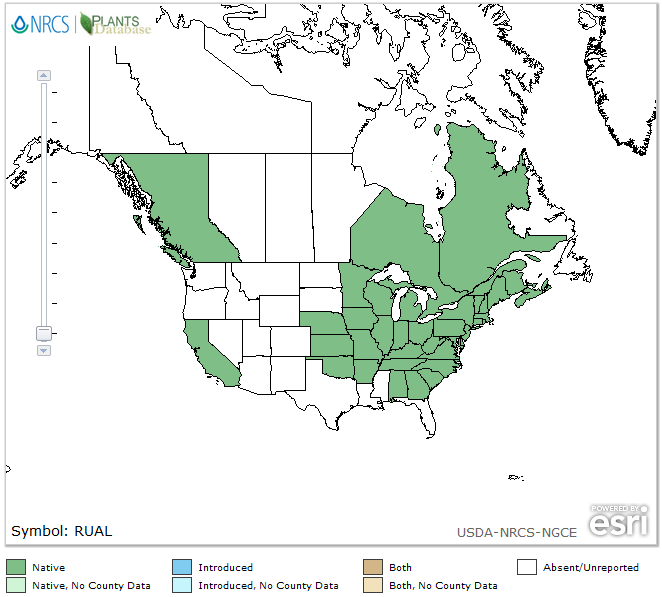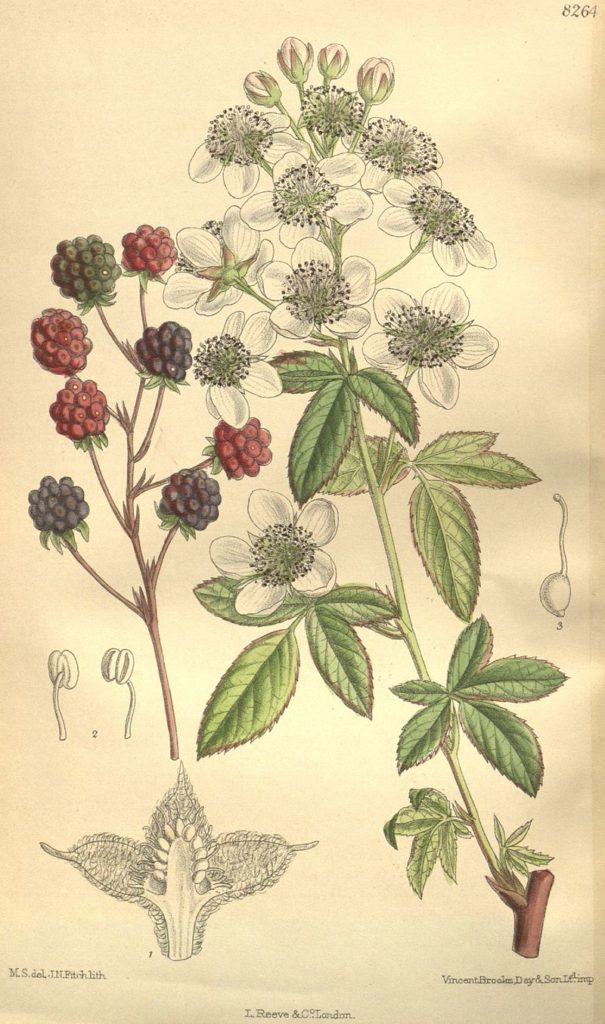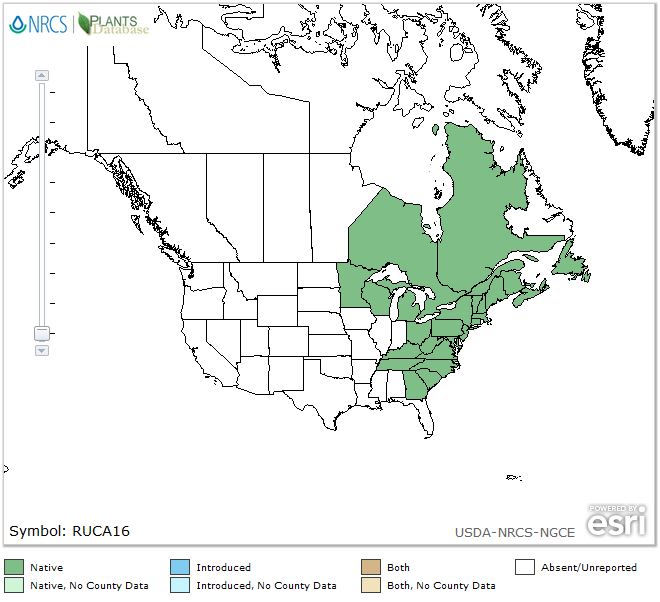There are many species of rubus in the northeastern United States-not to mention the rest of the country and the world at large-so this article will not begin to get close to examining them all, but will hopefully give a picture of how valuable a genus they are as delicious food for both humans and animals (especially as a host plant for caterpillars). While I focus on the fruits, it is worth pointing out that in many cases, the plant shoots are also edible.
American Red Raspberry (Rubus strigosus) is native to most of the United States and all of the northeast. It is a tasty edible, though often hybridized with a Eurasian counterpart, Rubus Idaeus. This plant has sprawling bienniel stems, which questions the distinction between perennials and vines. It is a host plant for caterpillars including Black Arches, Camouflaged Loopers, and Copper Underwings.
Further Reading:
https://en.wikipedia.org/wiki/Rubus_strigosus
USDA Plant Profiles
https://wildridgeplants.com/wp-content/uploads/2018/03/Wild-Ridge-Plants-Host-Plants-Catalog-2018-sm.pdf
Photo Credit:
https://commons.wikimedia.org/w/index.php?curid=12083613 – Walter Siegmund
Allegheny Blackberry (Rubus allegheniensis) is a large and flavorful plant that can form dense thickets. The thickets actually promote seedling growth for trees, protecting them from deer herbivory. It is also a host plant for thirty species of caterpillars including Blackberry Loopers, Camouflaged Loopers, Canadian Melanolophias, Checkered-fringe Prominents, Distinct Quakers, Impressive Daggers, Intractable Quakers, Io Moths, Large Lace-Borders, Lunate Zales, Paddle Caterpillars, Red-humped Caterpillars, Saddleback Loopers, Small Purplish Grays, Spotted Apatelodes, Tufted Thyatirids, and Variable Antepione.
Further Reading:
https://en.wikipedia.org/wiki/Rubus_allegheniensis
https://www.nhm.ac.uk/
USDA Plant Profiles
Photo Credit:
Doug Goldman, hosted by the USDA-NRCS PLANTS Database
Smooth Blackberry (Rubus canadensis) is rhizomatous shrub with sweet fruit often used in pies and jams. The plant forms thickets up to ten feet tall and is quick growing and often found in forested habitats. According to one study by Tooker et. al, nine different species of caterpillars were found using Smooth Blackberry as a host plant in Illinois, which is extra interesting since the USDA does not even list Illinois as part of its native range, suggesting even more caterpillars would use this plant where it is native.
Further Reading:
Tooker, John F., Reagel, Peter F., and Hanks, Lawrence M. 2002. “Nectar Sources of Day-Flying Lepidoptera of Central Illinois.” Ann. Entomol. Soc. Am. 95: 84 Ð96.
https://en.wikipedia.org/wiki/Rubus_canadensis
USDA Plant Profiles
Photo Credit:
https://commons.wikimedia.org/w/index.php?curid=12220230 – M.S. del., J.N.Fitch lith. – Curtis’s Botanical Magazine, London., vol. 135 [= ser. 4, vol. 5]

